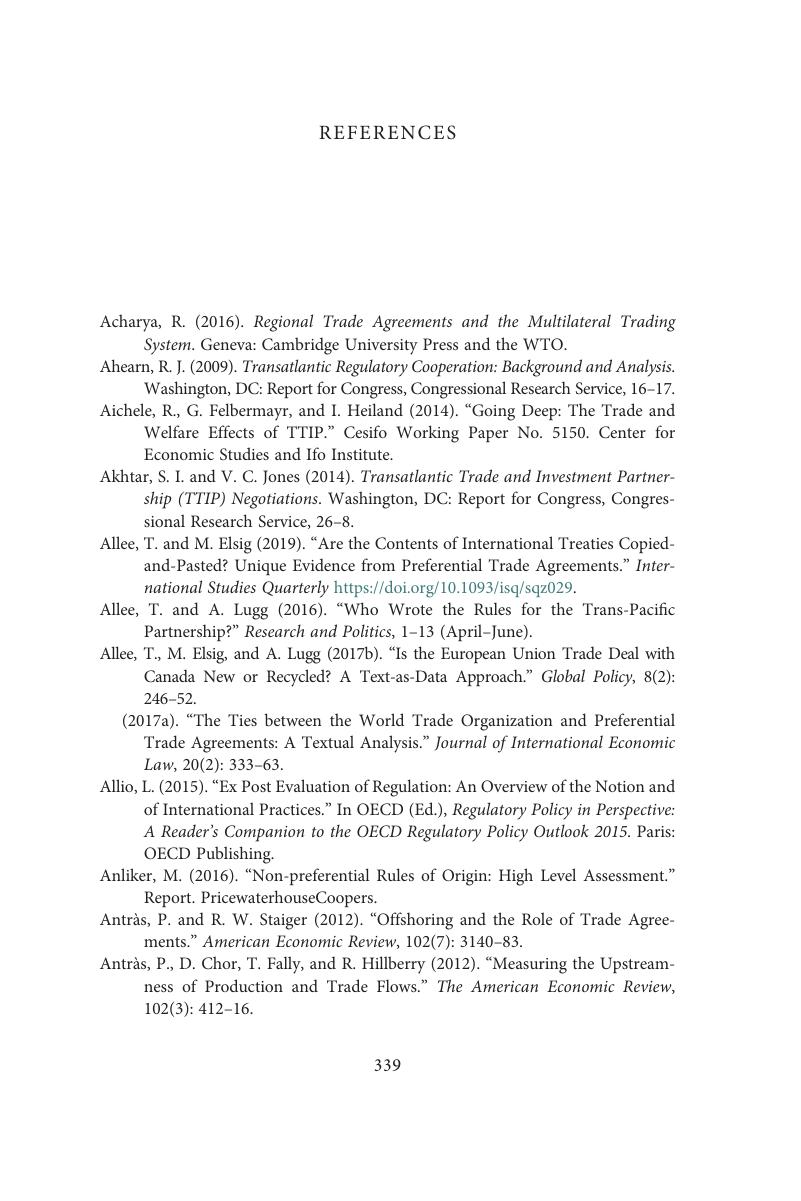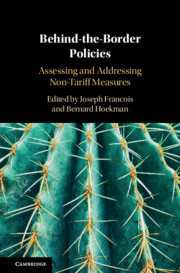Book contents
- Behind-the-Border Policies
- Behind-the-Border Policies
- Copyright page
- Contents
- Figures
- Tables
- Boxes
- Contributors
- 1 Moving beyond the Border
- Part I Concepts and Measurement
- Part II Assessing and Benchmarking Policy
- Part III Dealing with Non-tariff Measures: Legal and Institutional Contexts
- References
- Index
- References
References
Published online by Cambridge University Press: 25 October 2019
- Behind-the-Border Policies
- Behind-the-Border Policies
- Copyright page
- Contents
- Figures
- Tables
- Boxes
- Contributors
- 1 Moving beyond the Border
- Part I Concepts and Measurement
- Part II Assessing and Benchmarking Policy
- Part III Dealing with Non-tariff Measures: Legal and Institutional Contexts
- References
- Index
- References
Summary

- Type
- Chapter
- Information
- Behind-the-Border PoliciesAssessing and Addressing Non-Tariff Measures, pp. 339 - 360Publisher: Cambridge University PressPrint publication year: 2019

